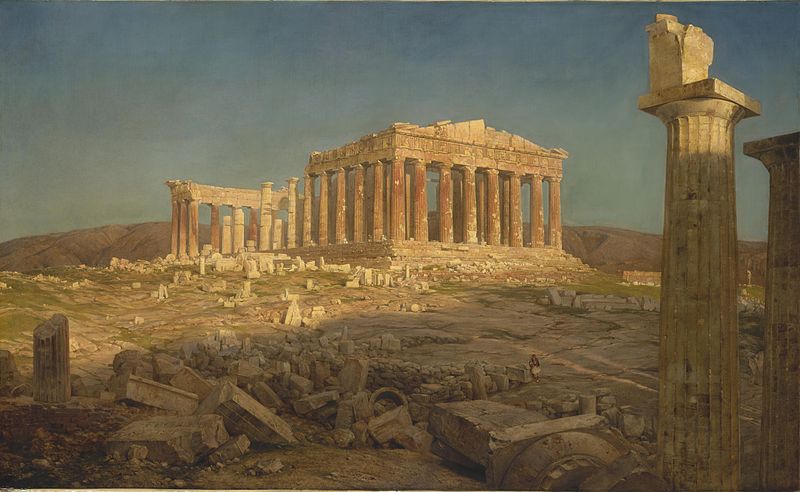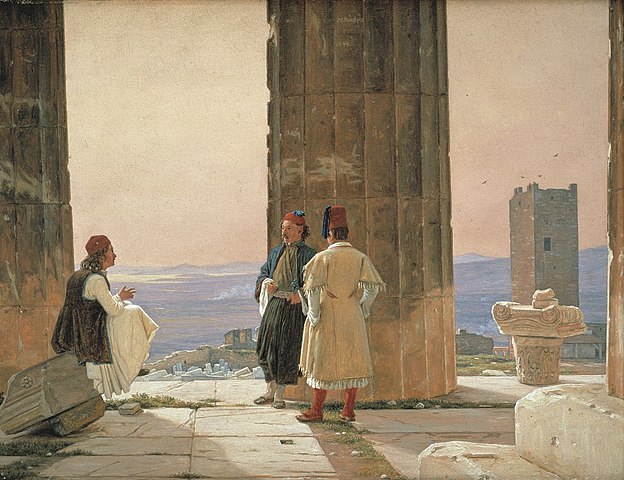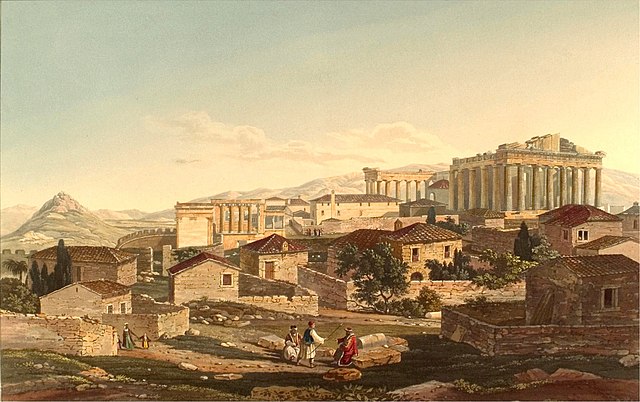
Thammasat University students interested in Western civilization, Greece, art, architecture, culture, history, political science, sociology, and related subjects may find two new books useful.
Who Saved the Parthenon?: A New History of the Acropolis Before, During and After the Greek Revolution and The Classical Parthenon: Recovering the Strangeness of the Ancient World are Open Access books available for free download at these links:
https://library.oapen.org/handle/20.500.12657/55817
and
https://library.oapen.org/handle/20.500.12657/58149
Their author is Dr. William Linn St Clair, a British historian, senior research fellow at the Institute of English Studies, School of Advanced Study, University of London, the United Kingdom.
The Parthenon is a former temple on the Athenian Acropolis, Greece, that was dedicated to the goddess Athena during the fifth century BC. Its decorative sculptures are considered some of the high points of Greek art, an enduring symbol of Ancient Greece, democracy and Western civilization.
The Thammasat University Library collection includes several books about different aspects of the Parthenon.

The publisher’s descriptions of the books follow:
In this magisterial book, William St Clair unfolds the history of the Parthenon throughout the modern era to the present day, with special emphasis on the period before, during, and after the Greek War of Independence of 1821–32. Focusing particularly on the question of who saved the Parthenon from destruction during this conflict, with the help of documents that shed a new light on this enduring question, he explores the contributions made by the Philhellenes, Ancient Athenians, Ottomans and the Great Powers. Marshalling a vast amount of primary evidence, much of it previously unexamined and published here for the first time, St Clair rigorously explores the multiple ways in which the Parthenon has served both as a cultural icon onto which meanings are projected and as a symbol of particular national, religious and racial identities, as well as how it illuminates larger questions about the uses of built heritage. This book has a companion volume with the classical Parthenon as its main focus, which offers new ways of recovering the monument and its meanings in ancient times. St Clair builds on the success of his classic text, The Reading Nation in the Romantic Period, to present this rich and authoritative account of the Parthenon’s presentation and reception throughout history. With weighty implications for the present life of the Parthenon, it is itself a monumental contribution to accounts of the Greek Revolution, to classical studies, and to intellectual history.
and
Complementing Who Saved the Parthenon? this companion volume sets aside more recent narratives surrounding the Athenian Acropolis, supposedly ‘the very symbol of democracy itself’, instead asking if we can truly access an ancient past imputed with modern meaning. And, if so, how? In this book William St Clair presents a reconstructed understanding of the Parthenon from within the classical Athenian worldview. He explores its role and meaning by weaving together a range of textual and visual sources into two innovative oratorical experiments – a speech in the style of Thucydides and a first-century CE rhetorical exercise – which are used to develop a narrative analysis of the temple structure, revealing a strange story of indigeneity, origins, and empire. The Classical Parthenon offers new answers to old questions, such as the riddle of the Parthenon frieze, and provides a framing device for the wider relationship between visual artefacts, built heritage, and layers of accumulated cultural rhetoric. This groundbreaking and pertinent work will appeal across the disciplines to readers interested in the classics, art history, and the nature of history, while also speaking to a general audience that is interrogating the role of monuments in contemporary society.

In an introduction to Who Saved the Parthenon?, Dr. St. Clair noted:
Anyone who chooses to write about the Parthenon must expect to face the suspicion that, surely by now, there can be nothing much new to be said. As early as 1682, when the modern on-the-spot study of the building had scarcely begun, Sir George Wheler, in his Journey into Greece, admitted that he expected to be criticized for repeating what was already known, but since he was able to add to the pioneering account published in French in 1678: ‘it would misbecome me to bury such Blessings in Oblivion.’ In offering an anticipatory apologia Wheler was participating in a tradition that had been revived in western European countries in the 15th century CE from studies of the ancient Greek and Latin orators and of the ancient manuals on the art of persuasion. When, for example, in the year 155 CE, over a millennium and a half earlier, Publius Aelius Aristides composed a public speech in praise of Athens, he began by asking for the sympathy of his listeners as he faced difficult choices between what to include and what to leave out. By the time of Aristides, the tradition that speakers and authors presented themselves as reluctant was already more than five hundred years old, documentable back to the age of Pericles in the fifth century BCE when the design of the classical Parthenon was under discussion, by which time the tradition was already long established.
In this book I explore the history of the Parthenon throughout the modern era to the present day, with special emphasis on the period before, during, and after the Greek War of Independence of 1821–1833 in which the Greeks and their allies sought to break free from the Ottoman Empire. I situate this pivotal period in Greek history, including the two sieges of Athens and the roles played by British diplomat Stratford Canning and Ottoman statesman Reschid Mehmed Pasha (Reşid Mehmed Pasha), within the longer life of the Parthenon. I am interested particularly, not simply in the history of the building itself, but the history of looking at the Parthenon, and the ways in which it has been made meaningful by, and to, different groups of people. A related volume, also released by Open Book Publishers, explores the history of the Parthenon in classical times.
I thought when I first started that this study might provide a worked example of an ‘archaeology’ or a ‘genealogy’ of knowledge, as had been called for by Michel Foucault, and the historiographical presentations I have adopted have been as much counter-chronological as chronological. Foucault’s assumption that the layers of interpretation, ‘discursive events’, are ‘tell layers’, and that ‘any attempt to organize history and time is contingent on the observer’, is certainly a huge intellectual advance on what the authors of a book on the classical tradition call ‘the robust naiveté of earlier ages’. However Foucault’s recommendation that we ought to accept without reluctance that ‘any attempt to organize history and time is contingent on the observer’ may still risk giving insufficient weight to the fact that the trajectories of consumption, of mediation, of interpretation, of the theories by which they were underpinned, and of the rhetoric within whose conventions the interpretations were justified do not form a sequence that coincides with chronological layering. The history of looking at the Parthenon that has emerged from the present study is one where the past and the future as well as the present have themselves been fields of contestation, and where different ways of seeing can sometimes co-exist, morphing with only occasional resolution, for long periods of time. It is a history of conjunctures of consumption.

(All images courtesy of Wikimedia Commons)
